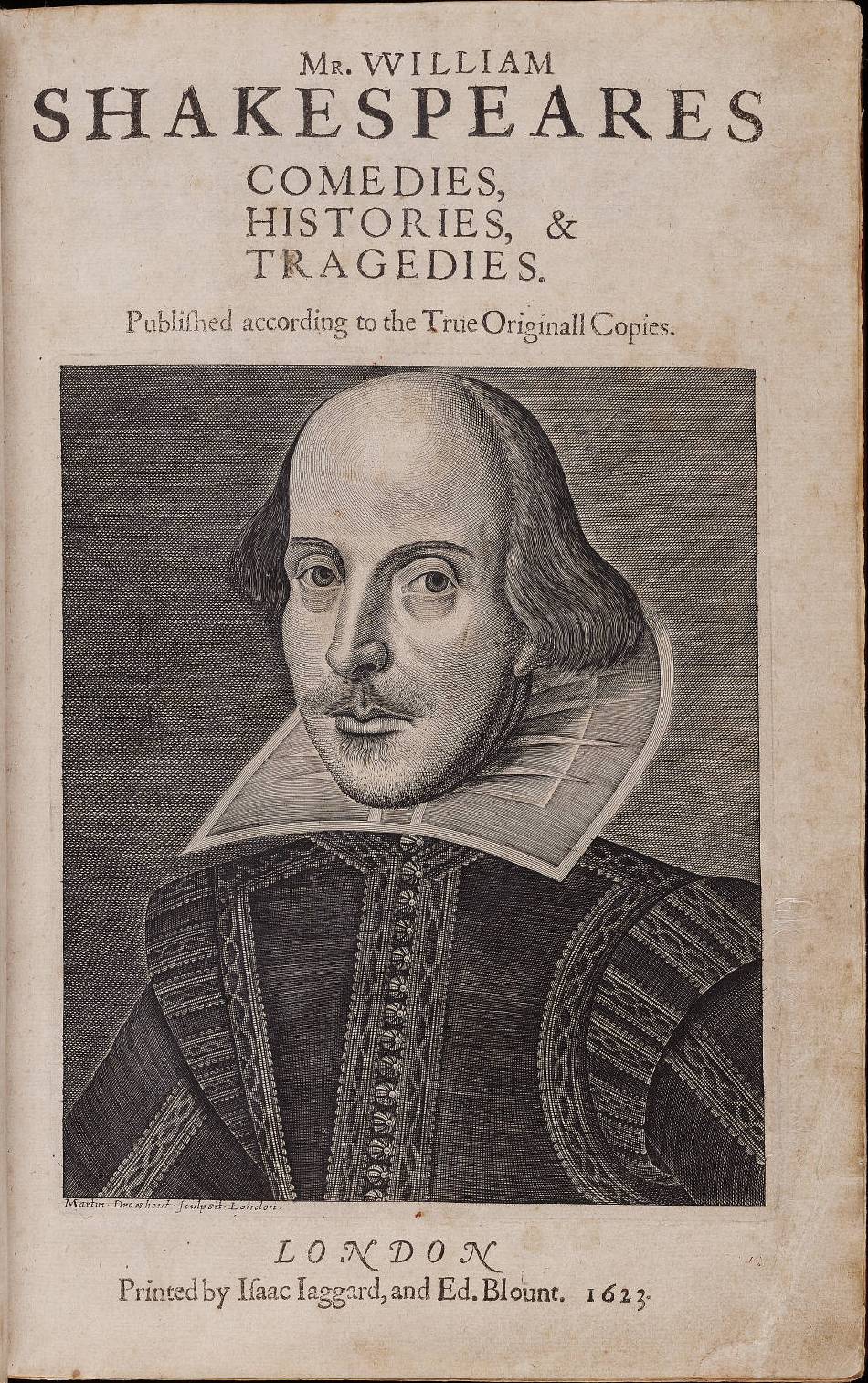
One of only two definitive portraits of William Shakespeare, by engraver Martin Droeshout. Published in 1623 in the famous “First Folio” of Shakespeare’s works. (Photo: Wikimedia Commons [Public domain])
Who was William Shakespeare? Most people do not know much more about the Englishman except that he wrote plays. But for over 400 years, the playwright has managed to captivate readers, filmmakers, and pop-culture fans alike. The answer to his allure may lie in the enduring characters of his works or perhaps his poetic voice. Each generation reinvents Shakespeare. The audience members who sat in the Globe Theater laughed at the ribald jokes of Twelfth Night; 400 years later a young Channing Tatum played Duke Orsino in She’s The Man, a role which subtly introduced millennials to the works of Shakespeare.
Whether you can recite the balcony speech from Romeo and Juliet—or Leonardo DiCaprio as Romeo was your first crush—read on to learn more about Shakespeare, the man behind the legend.
Who was William Shakespeare?
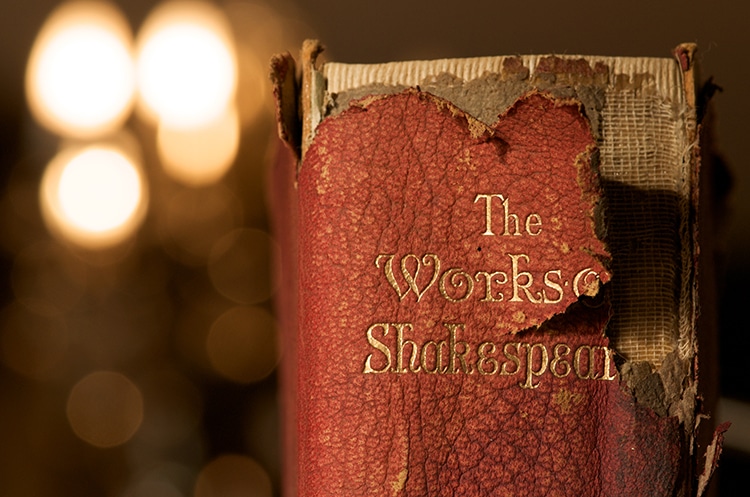
Photo: Stock Photos from NEIL BRADFIELD/Shutterstock
William Shakespeare’s name has been attached to beloved literary treasures for 400 years. However, Shakespeare’s beginnings were more humble than his enduring fame would suggest. The writer was born in 1564 in Stratford-Upon-Avon, a market town in Warwickshire, England. The son of a glove-maker, not much else is known of his early life. Like many other boys of moderate means, he was probably educated in Latin at a local school. Records do exist documenting his marriage, at age 18, to 26-year-old Anne Hathaway in 1582. Anne was likely already pregnant as the couple’s first child was born six months later. By 1585, the couple had three children together.
After several “lost years,” Shakespeare first appears in the records of the London theater scene in 1592. As critics were already attacking his plays, it is likely the writer had been established in the town for some time. Busily writing plays, his works were performed by players—groups of actors under the patronage of an aristocrat. However, Shakespeare himself often acted roles in his own dramatic works. In 1599, the Globe Theater was constructed in London on the banks of the Thames; Shakespeare would become famously associated with the institution, writing as the in-house playwright. He was both critically and financially successful at the Globe.

The house where Shakespeare was likely born in Stratford-Upon-Avon. (Photo: Stock Photos from ALICIA G. MONEDERO/Shutterstock)
After three decades of writing, William Shakespeare died of unknown causes at the age of 52 in 1616. His body was buried in the Holy Trinity Church of Stratford-Upon-Avon. A monument with a bust of the bard was erected some time before 1623—inscriptions compare Shakespeare to classical figures Socrates and Virgil. In 1623, the famous First Folio collection of 36 of Shakespeare’s plays was published posthumously. His wife Anne survived him but died the year of publication. No direct descendants of the famous playwright exist, as his grandchildren all died without children of their own.
What did Shakespeare look like?
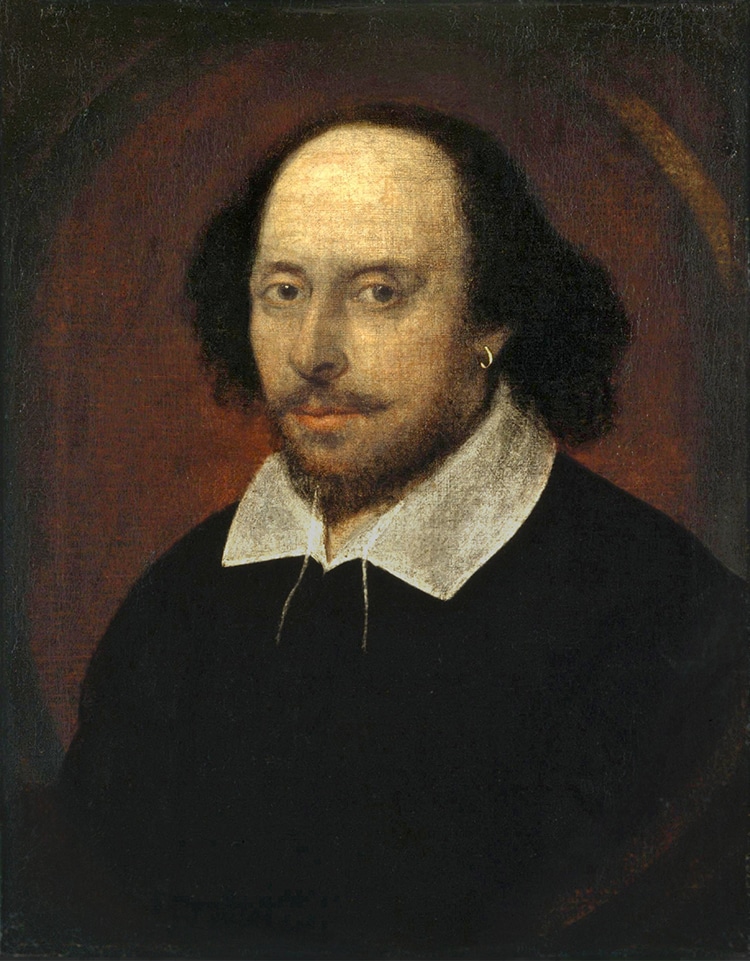
The Chandros Portrait by John Taylor, generally accepted to be of William Shakespeare. (Photo: Wikimedia Commons [Public domain])
It is often easier to understand historical figures if you can visualize them. With respect to Shakespeare, scholars debate what representations of the famous writer are accurate. In deciding whether a portrait is a true representation, there are several considerations. Was a portrait done from life? Has it always been identified as belonging to a historical figure, or was that attribution assigned decades or even centuries later? Does the portrait match any written descriptions of the historical figure?
Only two portraits of Shakespeare have been positively associated with him since his own time. One is the bust on the monument in Stratford-Upon-Avon, which was sculpted after Shakespeare’s death but before the death of his wife. Scholars hypothesize that the bust likely resembles the author, as his wife and many others who knew him would have visited the church and been involved in the planning of the tributary bust. No written descriptions of his appearance exist. The only other reliable guide to Shakespeare’s face is an engraving printed on the title page of the First Folio. Created by Martin Droeshout, it is known as the Droeshout portrait and was praised by Shakespeare’s contemporary Ben Johnson as an accurate likeness.
There are many other portraits that claim to depict Shakespeare. A few were painted in his lifetime, but they cannot be definitively identified as the author. Most widely accepted by scholars is the Chandos portrait which was painted some time in the first decade of the 17th century. By an unknown artist, the portrait bears a resemblance to the known images of Shakespeare. Once held in the private collections of the Duke of Chandos, the portrait now hangs in the National Portrait Gallery in London, whose experts believe the sitter is likely Shakespeare himself.
If you are curious about the portraits of Shakespeare and the questions they present to scholars, check out this podcast from the Folger Shakespeare Library titled “Shakespeare Unlimited.”
What was Shakespeare’s world like?
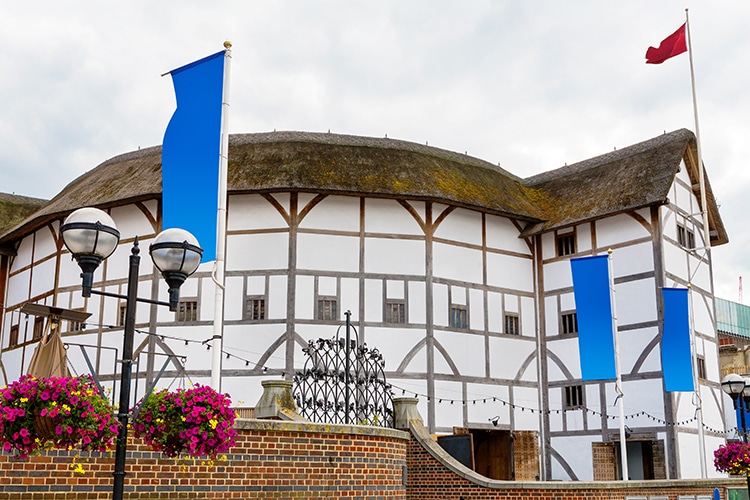
The modern Glove Theater, built to resemble the Elizabethan building which was destroyed by fires. (Photo: Stock Photos from ANDREI NEKRASSOV/Shutterstock)
If you walked down the streets of Elizabethan London, you would be dodging horse-drawn coaches and street vendors selling eels and pies. The London of the late 16th and early 17th century was bustling and crowded—the commercial center of a British Empire entering a period of rapid colonial expansion. Eating and drinking were favorite pastimes and thousands of venues for indulgence existed. Shakespeare would not have drank tea like modern Brits (a fashion which began in the 18th century); he would have drank plenty of beer and wine at local taverns and inns. He likely paired his drink with oysters, meat pies, and other delicacies offered in these establishments.
The theaters of Elizabethan London were centers of activity. Patrons anxiously watched the playbills and enthusiastically attended new plays. While only men could act on stage, women and men thronged together in the audience. You could encounter people from all classes at an opening performance. Theater etiquette was not quite the same as it is today—audience members likely booed, cheered, and talked rather freely. Shakespeare—as a playwright and player—would have been in the thick of all this excitement.
Another strong feature of Elizabethan London was less cheerful—even in Shakespeare’s day, bubonic plague was a frequent hazard of urban life. Between 1603 and 1610, multiple bouts of the deadly Black Death swept through London. The theaters were shuttered during these times of plague. Consequently, Shakespeare and his fellow players were often out of work. It is likely Shakespeare spent much of these dangerous days in the country with his family.
What did Shakespeare create?
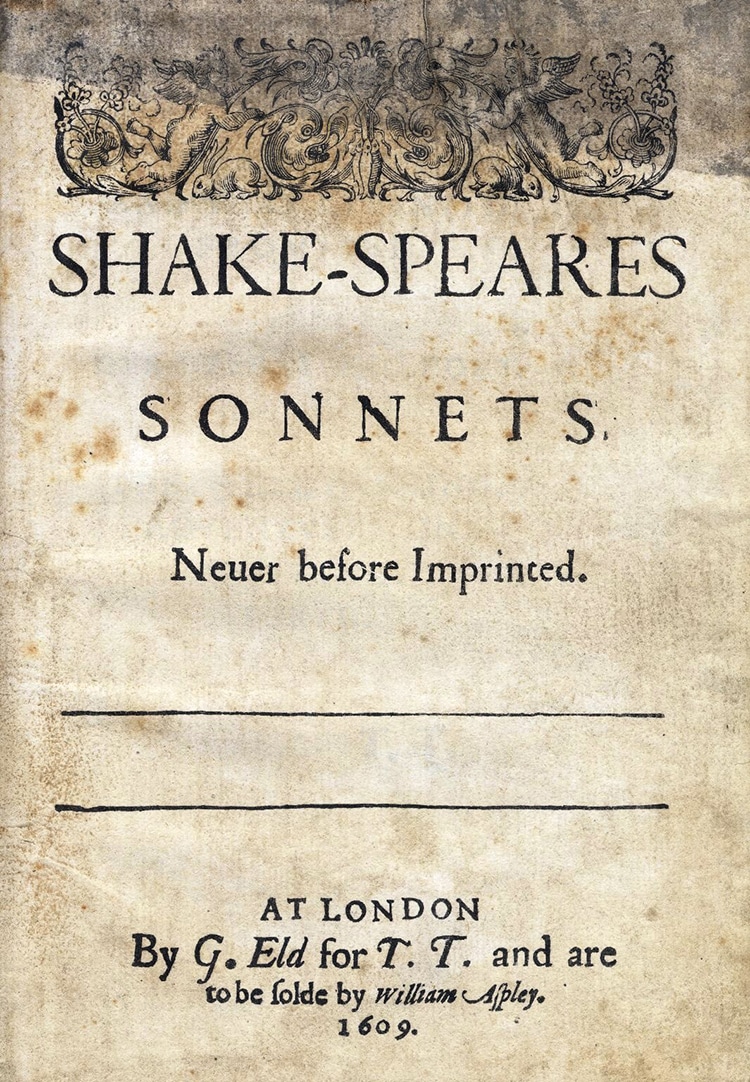
Title page of “Shakespeare’s Sonnets,” published 1609. (Photo: Wikimedia Commons [Public domain])
Most people can rattle off several Shakespearean titles. Few could list all of his works, numbering 39 attributed plays and 154 free-standing sonnets. Among the famous titles are Romeo and Juliet, Hamlet, As You Like It, and Twelfth Night. In general, all 39 plays can be sorted into comedies, histories, and tragedies. The comedies—such as Much Ado About Nothing and A Midsummer Night’s Dream—often feature the misadventures of witty lovers and laughable fools. By contrast, tragedies—including Hamlet and Romeo and Juliet—feature melancholy speeches and star-crossed lovers.
Shakespeare’s histories are less widely read among popular audiences, but they share many of the features of his tragedies. Based on past English kings, these dramatizations of dethronement and scandal tell the origin story of the Tudor dynasty. Scholars note the bard massaged the facts not just for dramatic effect; Shakespeare legitimized the Tudors by denigrating all former challengers to the throne during the turbulent War of the Roses two generations earlier. This spin might’ve won Shakespeare favor at the court of Elizabeth I and her successor James VI and I.
A mainstay of romance, Shakespeare’s sonnets are an impressive collection of 154 poems. The pieces were first published together in a book in 1609. Written in rhyme and meter, the sonnet was a common poetic form of the early modern period. Shakespeare’s sonnets are considered some of the finest of his day. Most address a mysterious young man, while some speak to a woman, potentially a lover. The pieces touch on love, jealousy, beauty, and death—among other themes.
Great art should be available to everyone. You can read all of Shakespeare’s plays and poems for free online at The Complete Works of William Shakespeare, a website hosted by the Massachusetts Institute of Technology.
Did Shakespeare even exist?
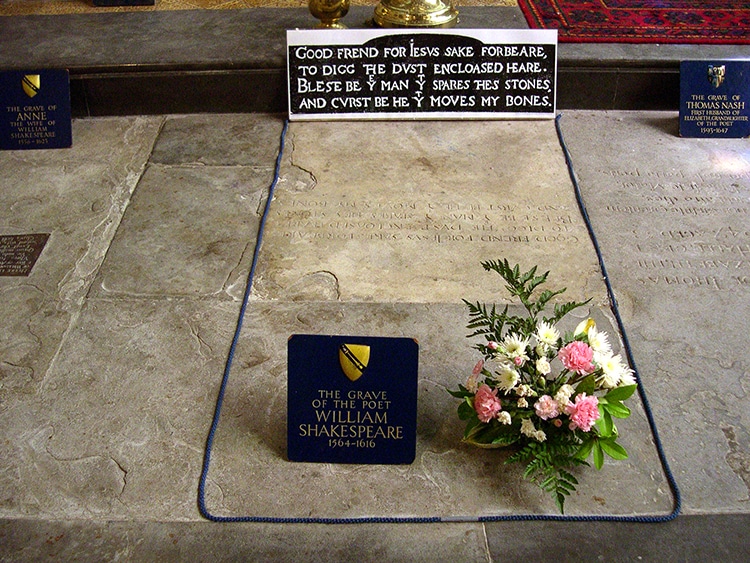
Shakespeare’s grave next to his wife, Anne Hathaway. (Photo: David Jones via Wikimedia Commons [CC BY 2.0])
William Shakespeare has been the center of many conspiracy theories—as well as more legitimate scholarly questions—over the centuries. These theories of alternative authorship arose in the mid-19th century when Shakespeare’s works were popularly revered in the UK and the United States. Known as anti-Stratfordians, some people believe Christopher Marlowe—a contemporary and competing playwright—authored the works. Others suggest an aristocratic author, and some even say Francis Bacon authored the plays. Perhaps the author behind the words was even a woman.
Although many without backgrounds in English literature or history weigh in on the debate, it has never gained much traction among scholars. There is much evidence of Shakespeare’s life, although manuscripts in his own hand do not survive. Comments and allusions from his contemporaries repeatedly identify Shakespeare as a playwright, even if they did not always appreciate his work. What is clear to scholars is that not all of Shakespeare’s plays are entirely written in his own words. Unlike the rules of plagiarism and copyright today, this was not illegal in Shakespeare’s day. Playwrights frequently borrowed characters, entire passages, and plot lines from their contemporaries or playwrights of preceding generations. Far from not being the author, Shakespeare behaved much like other authors of his day.
Shakespeare Today
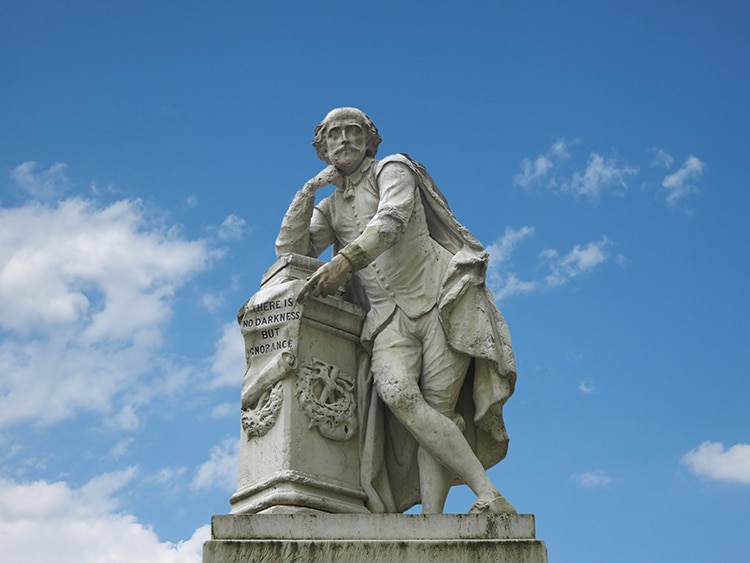
William Shakespeare, a statue built in 1874 in Leicester Square in London, UK. (Photo: Stock Photos from CLAUDIO DIVIZIA/Shutterstock)
Shakespeare today is much more famous than he was when he was alive. One of his most famous works, Hamlet, has been translated or performed in over 75 languages. His plays have made blockbuster films for global markets—including in Bollywood and Japan. Countless adaptions of the bard’s plots—some more subtle than others—have shaped literature for centuries. Even musicians have looked to Shakespeare. Taylor Swift’s ballad Love Story modernized the tale of Romeo and Juliet, while Dire Straits’ 1980 Romeo and Juliet is, in this author’s opinion, one of the greatest love songs of all time.
Today, Shakespeare’s plays are read in almost every American high school English class. College courses are solely devoted to the bard. Hamlet remains one of the most coveted roles for aspiring theater actors.
If you are in London, you can catch Shakespeare’s plays at the Globe Theater—communing with the ghosts of players past in the rebuilt replica theater. Under the candlelight, watch productions that bring the salient themes of power, love, and loss into the 21st century. Recent performances include Richard II with a cast exclusively of women of color, and a rendition of Macbeth to chill the bone during the COVID-19 pandemic (available to watch online). Lose yourself to art during troubling times, and think back to Shakespeare writing immortal words during a different time of plague.
Related Articles:
Free Shakespeare Coloring Book Includes 35 Vintage Illustrations of His Plays
Interview: Researcher Creates Free Archive of Over 3,000 19th-Century Shakespeare Illustrations
You Can Stream Shakespeare’s Greatest Plays for Free on Globe Theater’s YouTube
Patrick Stewart Is Reciting Shakespeare’s Sonnets to His Online Fans While in Self-Isolation
